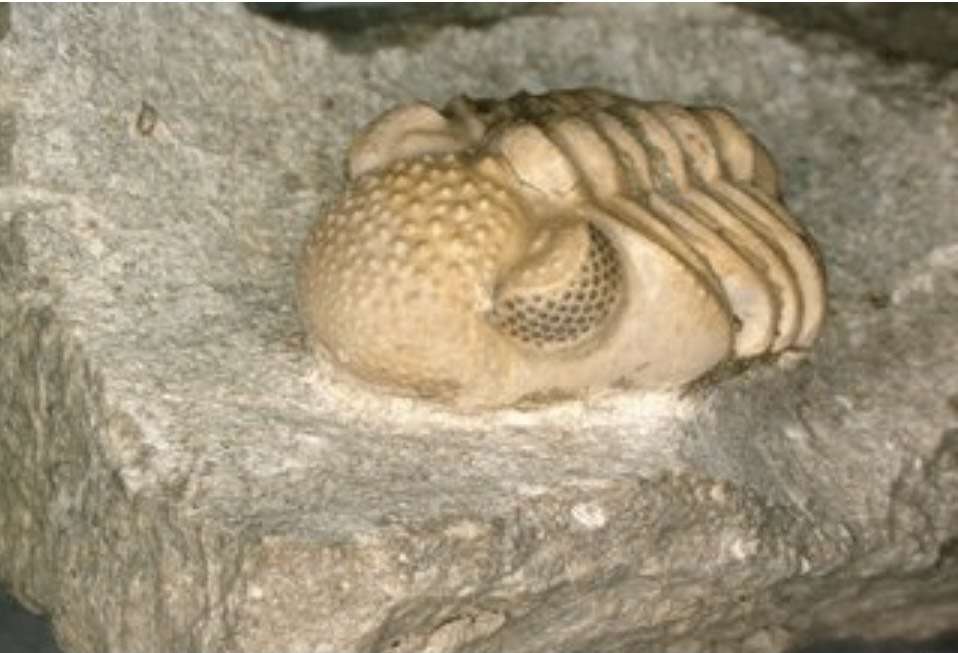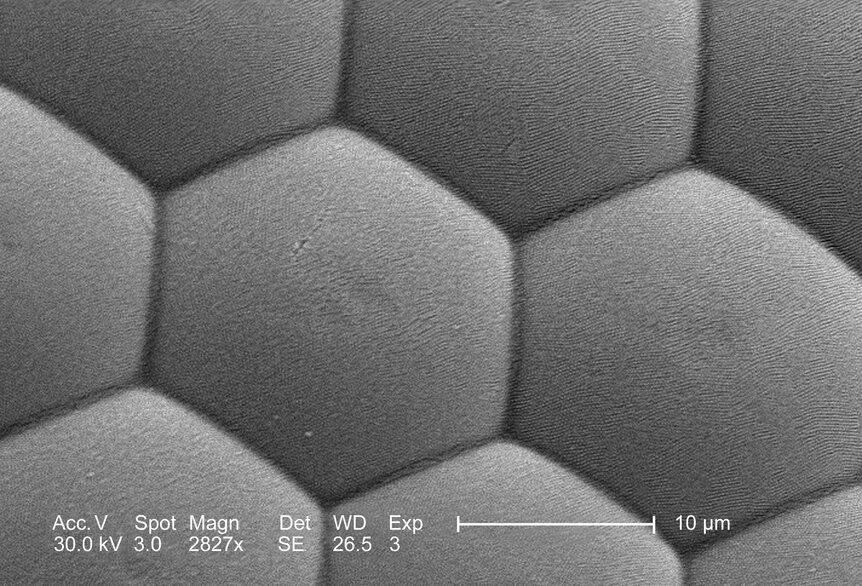Create a free profile to get unlimited access to exclusive videos, sweepstakes, and more!
Bizarre trilobite eyes are nightmare fuel emerging after almost 400 million years

You know those vintage horror movies that involve outsize praying mantises or ants or spiders with enormous compound eyes? That was an illusion achieved by filming the bug and the city, screaming humans and all, separately and then mashing them up.
The bug eyes above aren’t special effects. Trilobites of the suborder Phacopinae had eyes bizarre enough to be ripped from one of those movies, because the lenses were large enough to be actually visible (over a millimeter is pretty huge in insect terms). Phacopid trilobites that lived around 390 million years ago had hyper-faceted eyes that were like compound eyes within compound eyes. The could probably inspire a cinematic monster.
What zoologist Brigitte Schoenemann, of the University of Cologne, and her colleagues found out is that not only were these eyes impressively grotesque, but also connected to the trilobite’s brain. They recently published a study in Scientific Reports. Soft tissues like neural filaments are rarely preserved. However, fossilization froze them in time for hundreds of millions of years.
“In phacopid trilobites, each eye consists of up to two hundred compound eyes,” Schoenemann told SYFY WIRE. “Under each lens is its own compound eye. So we have here a very complex system.”
Compound eyes are complicated. The eyes of most insects and crustaceans can have anywhere from a few facets to hundreds of thousands. What makes phacopid trilobites stand out is not only the size of their eyes in general, along with unusually large facets, but wide lenses with wide spaces between them. This was previously dismissed as a waste of space (which could have otherwise been used to capture light) between lenses, but that there were 200 lenses in each eye with six facets under each. That is like having 200 compound eyes in just one eye.
Phacopid trilobites are thought to have lived in some of the darkest reaches of the ocean, deeper than other species, so it makes sense that their eyes would have evolved to be hypersensitive to light. There is an outer lens on each facet which focuses light through a cone-shaped structure onto the rhabdom, a crystalline receptor under the cornea which contains visual pigments and is sensitive to light. Every visual unit of a compound eye is known as an ommatidium. Now try imagining seeing through the lens(es) of a phacopid trilobite.
“When light comes in, configuration of pigments changes, and that evokes a small electrical signal, which is transducted to the brain,” Schoenemann said. “Whatever the lens captures the image seen by the arthropod is pixelated, like pictures seen in a computer screen. Each ommatidium contributes one pixel.”
By looking further into these alien eyes, Schoenemann was able to confirm what amateur paleontologist Wilhelm Stürmer had first seen in the ‘70s, when soft tissues were still thought to degrade instead of fossilize (most do but there are exceptions). Light guides weren’t considered to even exist back then. Turned out Stürmer was right. There was indeed a network of filaments beneath phacopid eyes, which included optic nerves, and his notes revealed that he had recognized this creature had hyper-compound eyes.
Phacopid eyes are unique among arthopods and in the animal kingdom. It is possible that these trilobites were able to use their eyes as a built-in editing program for perceiving things. They might have been able to up the contrast on certain images or see colors that elude the human eye, but whether they would have evolved any further remains unknown. Phacopinae went extinct around 360 million years ago, along with several other different types of trilobites, during a mass extinction at the end of the Devonian period. Such eyes were never seen again.
Schoenemann and the rest of us will never know what might have happened if there had been no mass extinctions and trilobites had survived to the present day.
“We could see that the information of the sub-compound eyes is pooled, because we saw the neuronal network fossilised. That indicates that the system was made very sensitive,” she said. “Unfortunately, they could not escape the mass extinction; 75% of all species did not. Even the excellent eyes could not help.”
At least these strange life-forms could live on by inspiring a horror movie monster.




























